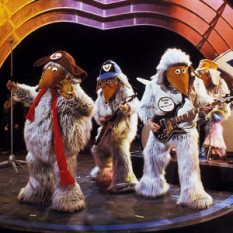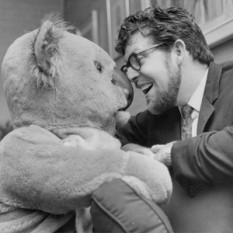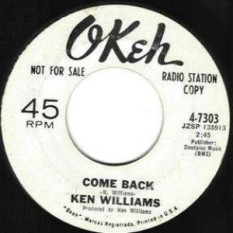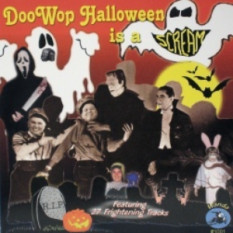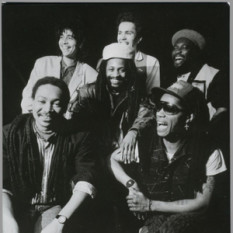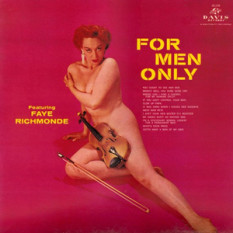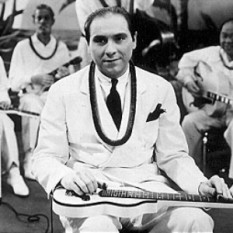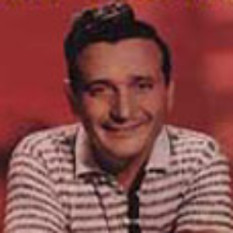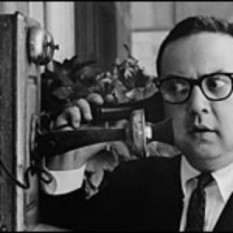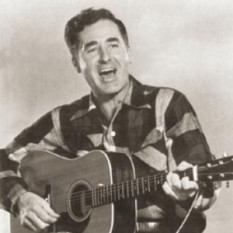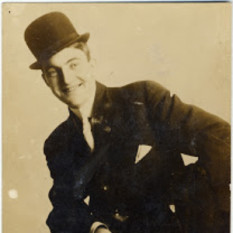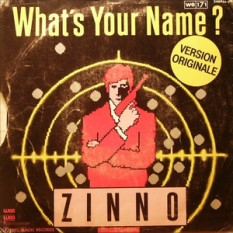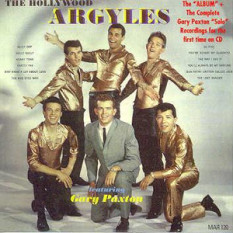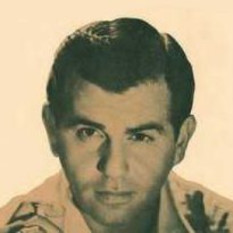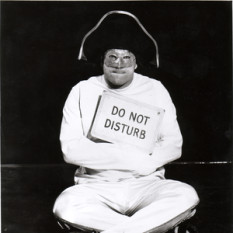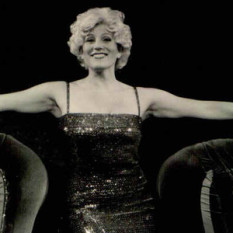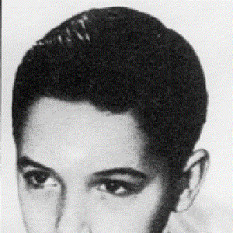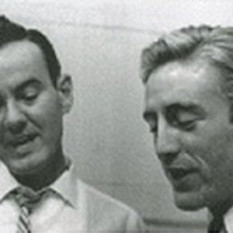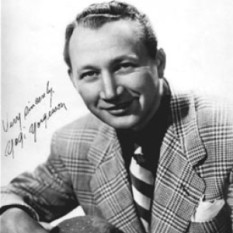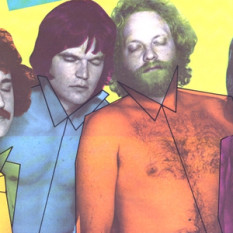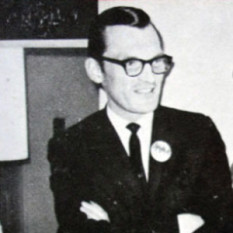A novelty song is a comical or nonsensical song, performed principally for its comical effect. Humorous songs, or those containing humorous elements, are not necessarily novelty songs. The term arose in Tin Pan Alley to describe one of the major divisions of popular music. The other two divisions were ballads and dance music. Novelty songs achieved great popularity during the 1920s and 1930s.
Novelty songs are often a parody or humor song, and may apply to a current event such as a holiday or a fad such as a dance. Many use unusual lyrics, subjects, sounds, or instrumentation, and may not even be musical. "They're Coming to Take Me Away, Ha-Haaa!" has little music and is set to a rhythm tapped out on a snare drum and tambourine. One novelty song, a remix of "Axel F" by Crazy Frog, started as a mobile phone ringtone.
Novelty songs were a major staple of Tin Pan Alley from its start in the late 19th century. They continued to proliferate in the early years of the 20th century, some rising to be among the biggest hits of the era. Varieties included songs with an unusual gimmick, such as the stuttering in "K-K-K-Katy", silly lyrics like "Yes! We Have No Bananas", and invocations of foreign lands with emphasis on general feel of exoticism rather than geographic or anthropological accuracy, such as "Oh By Jingo!" and "Nagasaki".
A famous 1940s novelty song was the 1942 "Der Fuehrer's Face", and the 1952 #1 single "(How Much Is) That Doggie in the Window?" became notable for extensive play and backlash because the song became annoying. Dickie Goodman, the godfather of the genre, faced a lawsuit for his 1956 novelty song "The Flying Saucer", which used sampling. "Yakety Yak" became a #1 single on July 21, 1958 and is the only novelty song (#346) of the Songs of the Century. Satirists such as Stan Freberg and Tom Lehrer used novelty songs to poke fun at contemporary pop culture in the early 1950s. The first Best Comedy Recording Grammy was awarded to David Seville's "The Chipmunk Song (Christmas Don't Be Late)", which used a speeded-up voice technique to simulate a chipmunk voice. In 1964, the Grammy for Best Country and Western Album was awarded to Roger Miller's Dang Me/Chug-a-Lug, which had several novelty songs.
In 1991, "The Stonk" novelty song raised over £100,000 for the Comic Relief charity. In 1993, "Mr Blobby" became the second novelty song to reach the coveted Christmas number one slot in the UK, following Benny Hill's 1971 chart-topper "Ernie (The Fastest Milkman in the West)".[5] Many popular children's TV characters would try to claim the Christmas number one spot after this. In 1997, the Teletubbies failed to gain it with their single Say Eh-oh!. They came second in the charts to The Spice Girls second of three consecutive Christmas number one's, with Too Much. Later on at the turn of the millennium, Bob the Builder was successful in achieving a Christmas number one in 2000, with Can We Fix It?. This is currently the last novelty song to have been released into the UK Christmas Charts. However, Bob the Builder did have another number one single a year later with a cover of Lou Bega's Mambo No.5, and also another less successful single in 2008 Big Fish Little Fish, peaking at 81 in the UK Singles Chart.
After the fictitious composer P.D.Q. Bach repeatedly won the "Best Comedy Album" Grammy from 1990 to 1993, the category was changed to "Best Spoken Comedy Album"; when "Best Comedy Album" was reinstated in 2004, "Weird Al" Yankovic won for Poodle Hat.
Novelty songs were popular on U.S. radio through the 1970s and 1980s, to the point where it was not uncommon for novelty songs to break into the top 40. For instance, Chuck Berry's "My Ding-a-Ling" reached #1 on the Billboard Hot 100 in 1972, and Ray Stevens, known for such novelty hits as "Ahab the Arab" , "Gitarzan", and "Mississippi Squirrel Revival", had a #1 hit with "The Streak" in 1974. Freeform and album-oriented rock stations made use of novelty songs; some of the best-known work from Frank Zappa, for instance, is his extensive body of novelty music. Beginning in 1970, Dr. Demento's nationally syndicated radio show gave novelty songs an outlet for much of the country; this lasted through the mid-2000s, when the show (mirroring trends in the genre) faded in popularity until its terrestrial cancellation in June 2010. Novelty songs and parodies are fixtures on morning radio.
One of the longest selling novelty songs of "Rock and Roll" is Zane Ashton's whimsical "He Was A Mean Dragon," recorded in 1961 on Lan-Cet Records and still being sold on the internet today. Members of the band on the record include Ray Pohlman, Earl Palmer, and Al Casey, who said, "It was so funny I laughed my way through the whole session." With the recent re-issue of the record by Ace Records in England and entitled "The Dragon", this record is well on the way to actually becoming "The Longest Selling Novelty Record." The record was recently picked up to be sold on iTunes which will further enhance its longevity.
In the 21st century, novelty songs have found a new audience online: the nonsense song "The Fox (What Does The Fox Say?)" by Norwegian comedy duo Ylvis scored more than 300 million hits on YouTube in 2013.
.

